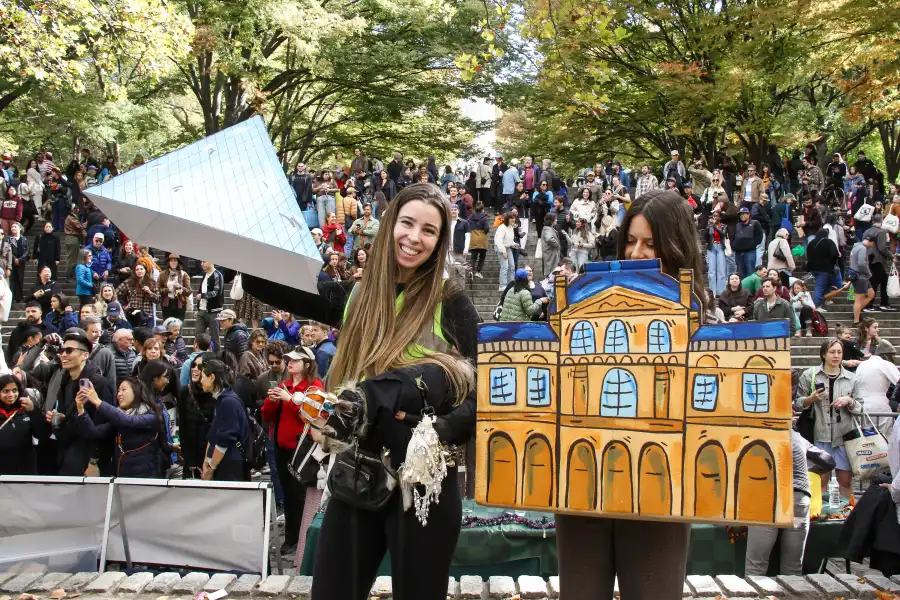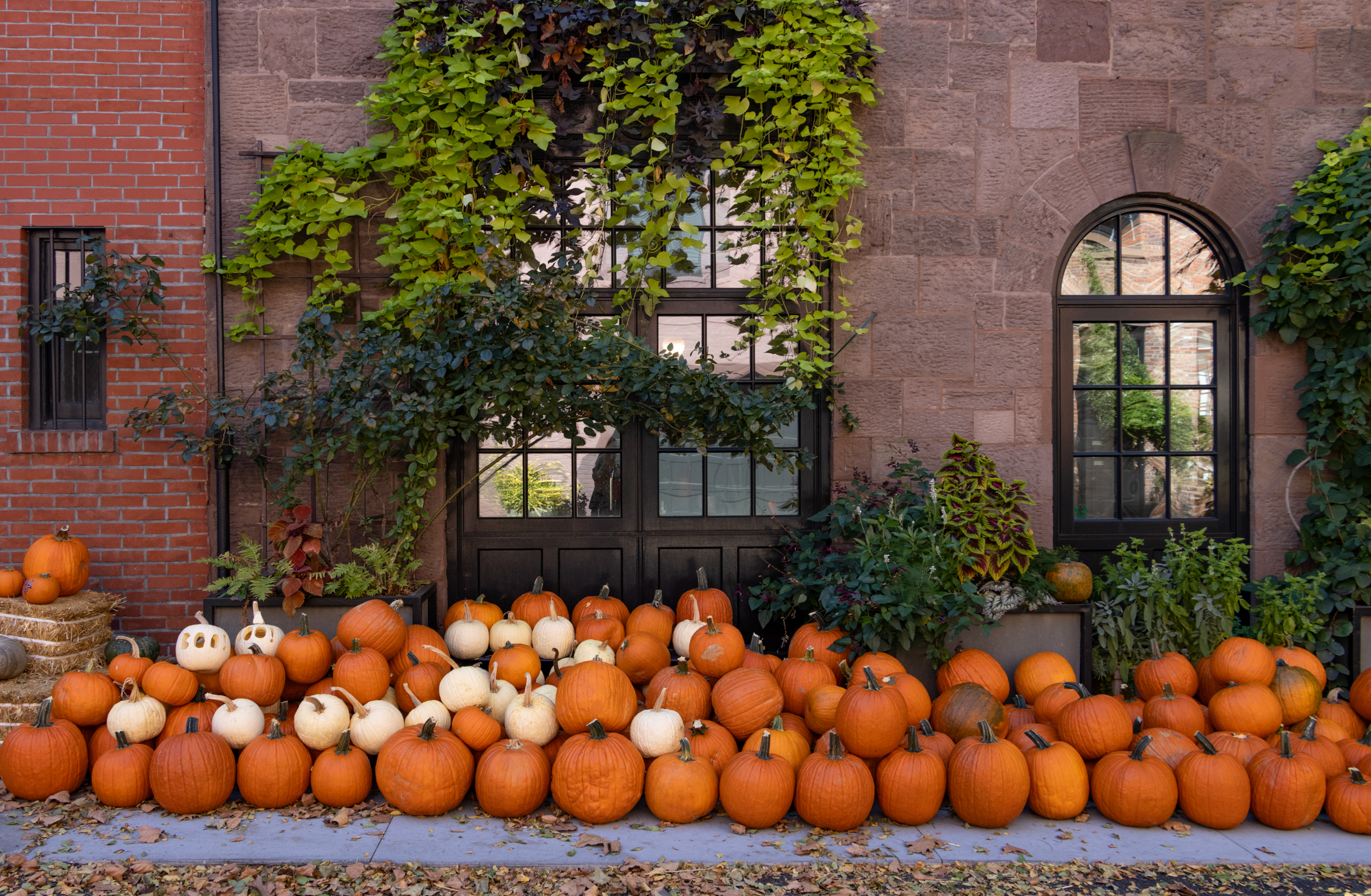Walkabout With Montrose: Through Colored Glass, Brightly
Colored glass has been with us in some form since ancient times, both the Egyptians and Romans crafted exquisite small colored glass bowls and vases. 4th and 5th century Christians used thinly sliced pieces of alabaster in their windows, which allowed diffused light, but it was the Muslim architects of the same time who first…


Colored glass has been with us in some form since ancient times, both the Egyptians and Romans crafted exquisite small colored glass bowls and vases. 4th and 5th century Christians used thinly sliced pieces of alabaster in their windows, which allowed diffused light, but it was the Muslim architects of the same time who first formulized and placed stained glass in the windows of the mosques of the Middle East.
Stained glass, which is made by adding metal salts to molten glass, reached its heights during the Middle Ages in Europe, and has been fascinating us ever since.
Its remained in primarily an ecclesiastic domain for hundreds of years, but during the 19th century, as all things became decorative, stained and painted glass began to be created specifically for use in more and more residential buildings, and its premier artisans began to create some of their finest works for secular residential use.

I use stained glass as an overall catch phrase to include colored or pot glass, painted glass and late Victorian opalescent glass invented by Louis Comfort Tiffany. Most of us are now familiar with the names of Tiffany, La Farge and Lamb, whose magnificent creations graced the mansions, churches, and clubs of the rich.
However, simpler stained glass panels were inexpensive, and popular enough to be mass produced by many companies, and incorporated into the homes of the middle class, and thankfully, quite a bit remains to this day. Brooklyn has some world class examples of important glass works.
The earliest is probably Minard Lefever’s great 1840’s church, St. Anne and the Holy Trinity, in Brooklyn Heights, home to the magnificent windows of William Jay Bolton. The works of the late Victorian glass studios of Tiffany, La Farge, Lamb, Hunt, and others, are also found throughout Brooklyn.

Brooklyn’s great architects, known and unknown, used stained glass to great decorative affect in our neighborhoods.
We can often see the transom windows, fan windows and other decorative windows from the street, often in great profusion, which leaves one wondering what treasures are in the interior or rear windows that we can’t see; fine glass in cabinets, interior doors, bathroom windows and partitions.
The Bed Stuy homes designed by Montrose Morris are especially rich in visible stained glass, and some blocks, such as Hancock Street and Arlington Place, simply sparkle. Unfortunately for us on the street, this glass was meant to be viewed from the inside, with light streaming through it, and photos taken from the street cannot capture the beauty of that light.

Even so, the intricacies of the patterns, the mixtures of colored, opalescent, bulls eye, painted, and bejeweled glass is still impressive to passersby to choose to look. I’ve assembled a collection of sacred and secular windows, and have been fortunate enough to been able to include some interior shots, as well.
I love stained glass. I’ve seen some amazing glass over the years, in houses for sale, and on house tours and the homes of friends. I’ve watched houses that I passed everyday on my way to work lose their glass to renovation, theft and salvage, and I’ve been lucky enough, on occasion, to have rescued a few small pieces, literally from the trash heap.
Ironically enough, the house I ended up buying has none whatsoever, dammit, but it’s easy to see that I once had stained glass in the many transom windows in my bays, and probably elsewhere, as well. I have plans for restoration, someday.

As per usual, my haunts of Crown Heights North and Bed Stuy have yielded some great examples, and as I wander around more of the city in the months to come, I will revisit this and other decorative topics. In the meantime, look around your neighborhood, this art is everywhere, if you only look.

Here is a list of some of the great Tiffany Studio works in Brooklyn:
Brooklyn Heights First Presbyterian Church, First Unitarian, Grace Church, Plymouth Church of the Pilgrims, Packer Collegiate Institute
Park Slope All Saints Episcopal Church, Memorial Presbyterian Church, Old First Dutch Reformed Church, St. Augustine’s RC Church, Bklyn Society for Ethical Culture
Fort Greene/Clinton Hill Church of St. Luke and St. Matthew, Lafayette Ave. Presbyterian Church, St. Luke’s Lutheran Church, Charles Millard Pratt House (residence of RC Bishop of Bklyn),
Cobble Hill Christ Church and Holy Family
Flatbush Church of the Evangel
Bay Ridge Lutheran Church of the Good Shepherd
Bensonhurst New Utrecht Dutch Reformed Church and Parish House
Bushwick St. John the Baptist
Crown Heights North St. Bartholomew’s Episcopal Church
Other impressive and important stained glass works can be found in Brooklyn, as well:
La Farge Studios: Brooklyn Museum, Packer Collegiate, Caroline Ladd Pratt House, St. John the Baptist, Bushwick.
Lamb Studios: Plymouth Church of the Pilgrims,
Other fine turn of the century stained glass examples: Brooklyn Women’s Club (BHts), Bethlehem Lutheran Church, Church of the Redeemer(BorHill), Green-Wood Cemetery, Lady Queen of All Saints (ClHill), St Paul’s RC (CobHill), St. Gregory the Great RC (CHN), St. Thomas Episcopal (Bushwick)
[Photos by Suzanne Spellen]





stained glass are great but repair cost is EXPENSIVE. MM, I got quoted ~$1.4k to repair the panes on that small window in my crown heights rental. And that’s not including millwork for the frame, sill,…
“Here is a list of some of the great Tiffany Studio works in Brooklyn:”
Montrose, that was a great bonus! I’m going to check out the places in BH you listed, all of which I walk past all the time. But all also an example of how much there is around us to see and appreciate, yet miss when we are not paying attention.
Nah- the only one laughing is me. As I told you yesterday- ignorance is bliss. No wonder you’re so happy.
“Africa was the birthplace of homo sapiens. The birthplace of civilization was considered to be in the Middle east- probably Turkey, but in the area known as the “Fertile Crescent.””
ROTFLMMFAOYAFS!!!!!!!!!!!!!!!!!!!!!!!!!!!!!!!!!!!!!!!!!!!!!!!!
BXGRL PLEASE STOP IT!!!!
The What
Someday this war is gonna end…
Morris where are you?????
Africa was the birthplace of homo sapiens. The birthplace of civilization was considered to be in the Middle east- probably Turkey, but in the area known as the “Fertile Crescent.”
And so why don’t you google that, What, instead of trying to chide Montrose on her supposed failings? Feeling a little inadequate, What? Or a lot. Next time try being accurate instead of just racist.
Wonderful post, MM. There is nothing as beautiful as the sun coming through a glorious Rose window. I love that so much of the stained glass has survived.
What, I don’t want to argue with you in this thread about the ‘orgins of Architecture’
“All Architecture has origins in Egypt!”
You claim it’s in Egypt…It’s not. I also said the start of a ‘complex civilization’ with built cities. Sorry ‘retard’, it didn’t start in Egypt.
“I love this blog! I love that the retards will ignore history to support a bullshit argument!”
Yep, you’re absolutely right…You and your bullshit arguments about architecture.
You want to argue about this take it to the Open Thread.
Sorry Montrose.
“Go a little east on the map. You’ll have the start of a complex civilization and the origins of Architecture.”
I love this blog! I love that the retards will ignore history to support a bullshit argument!
Africa is the mother of civilization….
We are her children….
The What
Someday this war is gonna end…
Thanks Montrose! One of the amazing things about stained glass is its longevity, as you (and The What’s cut and pastes!) indicated.
I was at The Cloisters over the weekend and I was amazed at how well some of the 600+ year old glass had been preserved.
Would love to have some in my own home when I finally get round to buying one!
“All Architecture has origins in Egypt!”
Um, No!
Go a little east on the map. You’ll have the start of a complex civilization and the origins of Architecture.